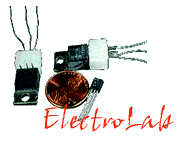






![]()
ADVANCED
BIPOLAR JUNCTION TRANSISTOR: SCIENTIFIC ASPECTS
click here to learn more about the development of this
transistor
| C
onstruction: The BJT has three different layers sandwiched together. If an n-type semiconductor is added to the p-side of a p-n junction diode, then it results in the formation of an n-p-n type of transistor. Adding a p-type semiconductor to the n-side forms a p-n-p type transistor. Hence its two types are n-p-n and p-n-p |
 Circuit symbol of BJT |
However, the middle layer called the Base is very thin and lightly doped. Of the
outer regions, one is called the Emitter and is very heavily doped and the other is
called the Collector and is less heavily doped in comparison to the Emitter.
Working:
Consider the working of an n-p-n type of BJT. It is generally connected such that the Emitter and the Base are forward-biased and the Base and Collector are reverse-biased. This biasing is ensured by the application of a voltage that is different from the input voltage. However, this voltage is steady, direct voltage and the input voltage may be alternating voltage. When the current passes through the circuit, the Emitter-Base junction being forward-biased, most of the electrons from the Emitter flow towards the Base.
However, the Base, as mentioned above, is very lightly doped. As a result, very few of the electrons entering from the Emitter constitute the Base current. The remaining electrons (almost 95%) flow into the Collector region.
These excess electrons ensure that the current flows through the reverse-biased Base-Collector junction. As this reverse-biased circuit has a very high resistance, the voltage obtained too is equally high. Moreover, this voltage depends upon the electrons entering the Collector from the Emitter, which in turn depends upon the input voltage and so the output voltage has a higher magnitude (amplitude), but the same frequency as the input voltage.
The same explanation holds true for the p-n-p transistors. Only, electrons are replaced by holes and voltage direction shown in the diagram will have to be reversed.